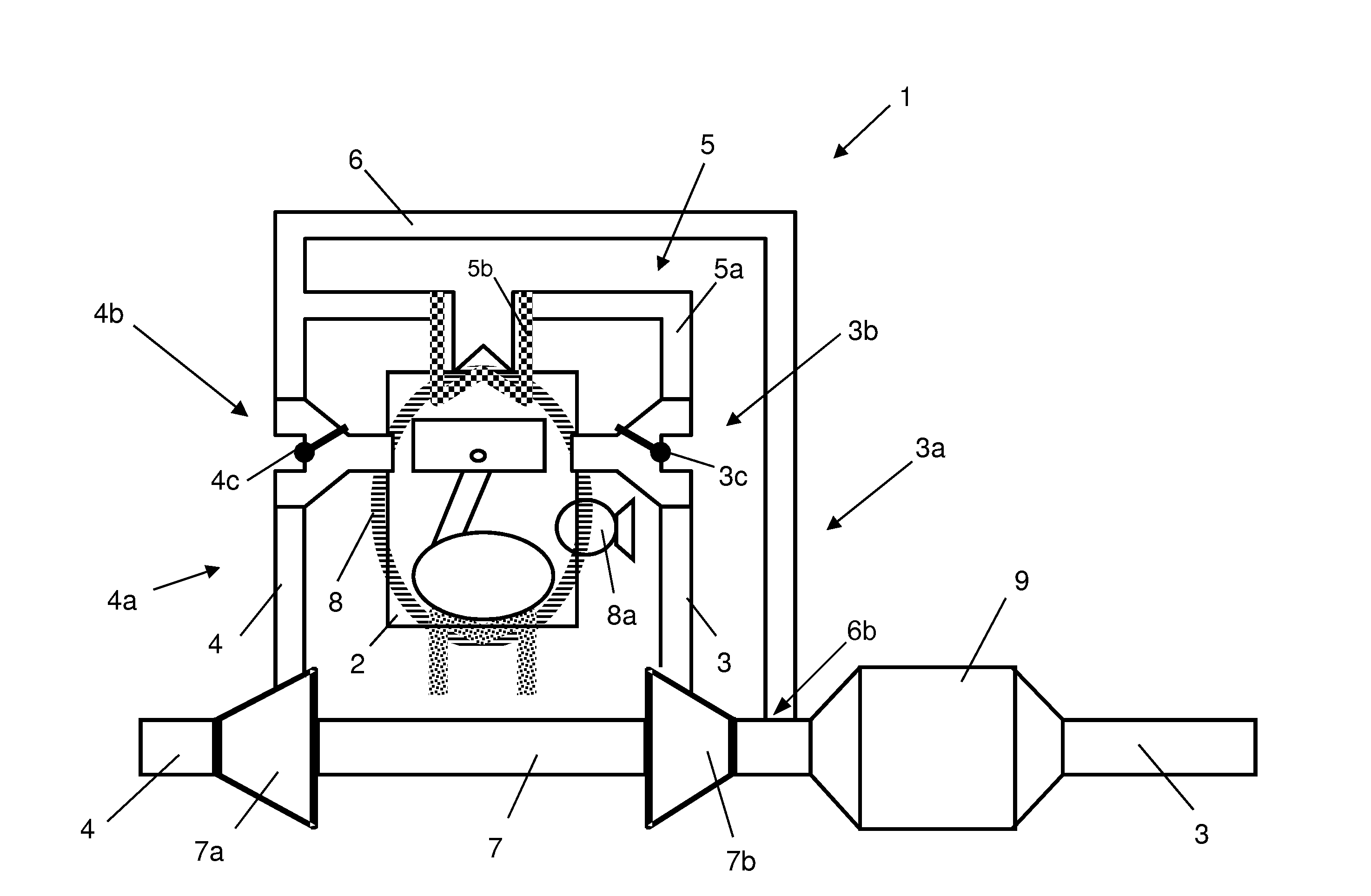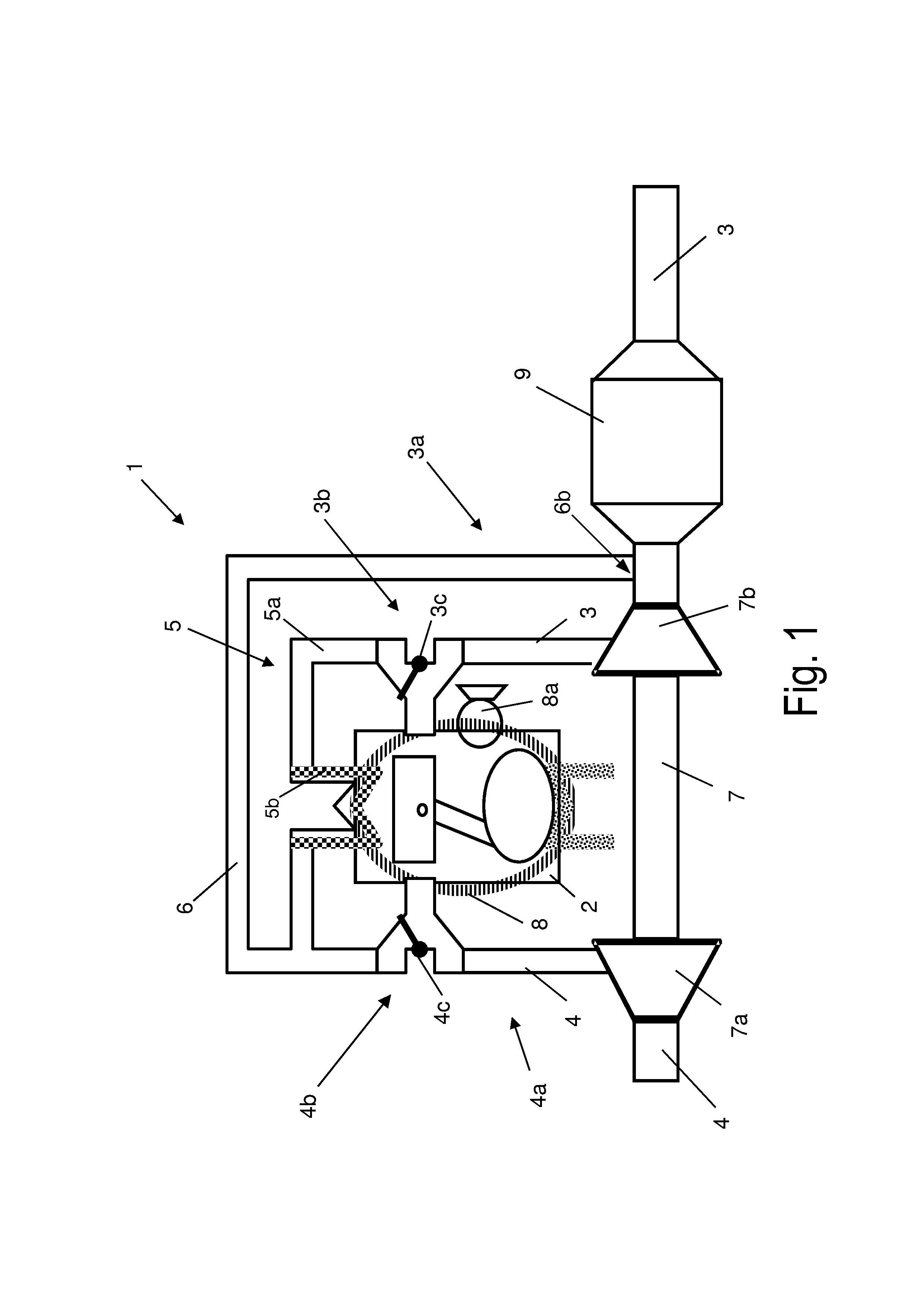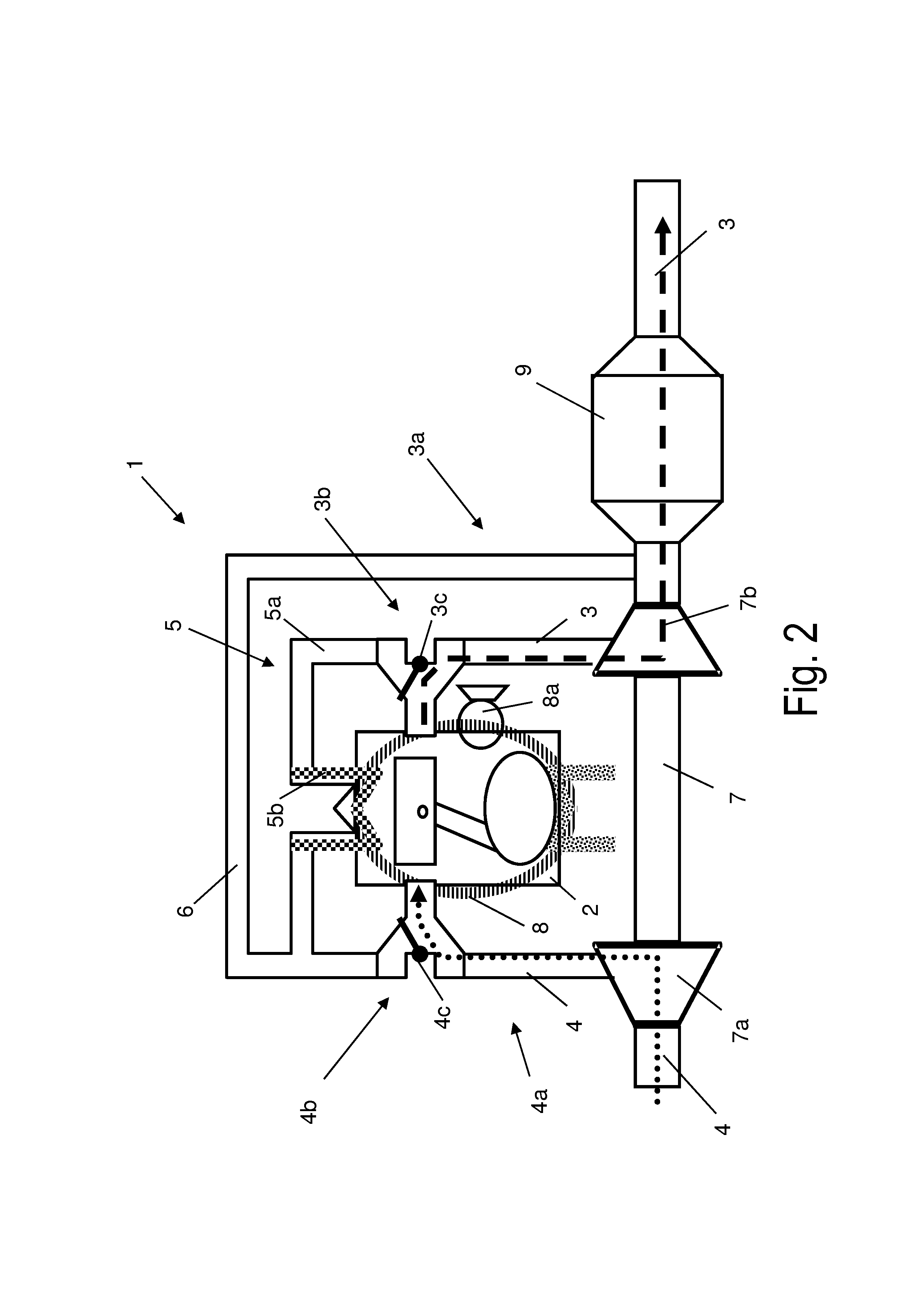Controlling Fresh Air and Exhaust Gas Flow in Turbocharged Internal Combustion Engine
a turbocharged internal combustion engine and fresh air technology, applied in the direction of electric control, machines/engines, mechanical equipment, etc., can solve the problems of additional problems in the operation of compressors, inability to generate charge pressure on the inlet side, etc., to reduce the charge pressure, reduce the air mass, and reduce the effect of power
- Summary
- Abstract
- Description
- Claims
- Application Information
AI Technical Summary
Benefits of technology
Problems solved by technology
Method used
Image
Examples
Embodiment Construction
[0074]FIG. 1 schematically shows a first embodiment of the internal combustion engine 1 and, representatively, one cylinder 2. The fluid flows are not indicated. The internal combustion engine 1 has, at the outlet side, an exhaust line 3 for discharging the exhaust gases via an exhaust-gas discharge system 3a, and, at the inlet side, an intake line 4 for supplying charge air via an intake system 4a.
[0075]The internal combustion engine 1 is equipped, for supercharging, with an exhaust-gas turbocharger 7, the compressor 7a of which is arranged in the intake line 4 of the intake system 4a and the turbine 7b of which is arranged in the exhaust line 3 of the exhaust-gas discharge system 3a.
[0076]The internal combustion engine 1 is furthermore provided with a bypass line 6 for bypassing the cylinder 2, which bypass line branches off from the intake system 4a downstream of the compressor 7a so as to form an inlet-side junction 4b and opens into the exhaust-gas discharge system 3a again a...
PUM
 Login to View More
Login to View More Abstract
Description
Claims
Application Information
 Login to View More
Login to View More - R&D
- Intellectual Property
- Life Sciences
- Materials
- Tech Scout
- Unparalleled Data Quality
- Higher Quality Content
- 60% Fewer Hallucinations
Browse by: Latest US Patents, China's latest patents, Technical Efficacy Thesaurus, Application Domain, Technology Topic, Popular Technical Reports.
© 2025 PatSnap. All rights reserved.Legal|Privacy policy|Modern Slavery Act Transparency Statement|Sitemap|About US| Contact US: help@patsnap.com



